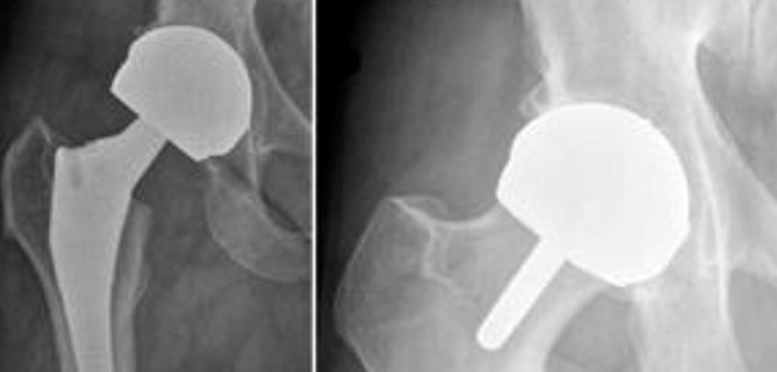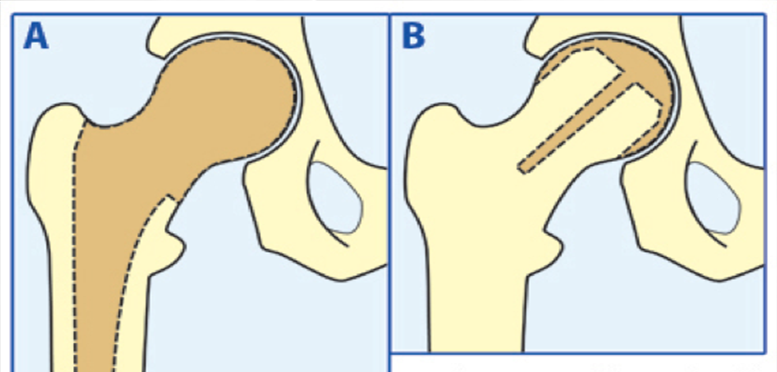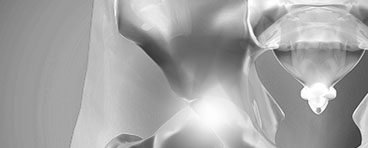Click on the links below to find out more
OVERVIEW
Hip Resurfacing is a special type of hip replacement which only resurfaces the joint surfaces of the hip, rather than removing the entire head of the femur. It may be recommended if you have advanced osteoarthritis and have exhausted the nonsurgical treatment options.
Hip Resurfacing Specialist in Melbourne
Have you been diagnosed with advanced osteoarthritis? Have you exhausted every non-surgical treatment option available?
If so, you may be a suitable patient for hip resurfacing.
As a renowned hip and knee surgeon, Dr Slattery offers patients hip resurfacing in Melbourne. Consultations are carried out at his Melbourne consulting rooms where he takes each patient’s individual medical history into account before deciding on the course of treatment.
What is Hip Resurfacing?
Hip resurfacing, a surgical intervention targeting hip joint degeneration often associated with conditions such as osteoarthritis, stands apart from conventional hip replacements by conserving a greater portion of the patient’s original bone. Unlike traditional approaches, this procedure seeks to retain more of the natural bone structure in the hip.
During a traditional hip replacement operation, the entire head of the femur and the damaged socket (acetabulum) are removed and replaced with metal, plastic or ceramic components. During hip resurfacing, the femoral head is left in place, trimmed and capped with a smooth metal (or ceramic) covering. The damaged bone and cartilage within the acetabulum are replaced with a metal shell. Currently, ceramic on ceramic hip resurfacing is being trialled as a way to reduce the complications arising from a traditional metal-on-metal procedure.
What are the Advantages of Hip Resurfacing?
There is some controversy among orthopaedic surgeons about the advantages of performing hip resurfacing rather than a traditional hip replacement. However, it is reported by the Australian Joint Replacement Registry that, in certain patients, resurfacing lasts longer than some total hip replacements. Resurfacings may also be easier to revise because they remove less bone from the femur and there is a decreased risk of hip dislocation. Some studies have also reported that patients returned to a more normal walking pattern following resurfacing.
However, hip resurfacing is not suitable for everyone and there are risks associated with the procedure. Candidates are usually less than 60 years old with a larger frame and strong healthy bones. Dr Slattery will make you fully aware of any associated complications and risks at your consultation.
Why Choose Dr Slattery for Your Hip Resurfacing?
Dr David Slattery has over 10 years of experience in diagnosing and treating hip problems such as total hip replacement, robotic hip replacement and hip arthroscopy. He’s worked alongside some of the leading hip specialist sergeon in Europe and Australia and is a fellow of both the Australian Orthopaedic Association and The Royal Australian College of Surgeons. His passion is orthopaedics and to this end, is constantly upgrading his knowledge and surgical techniques, so that he can offer more than just care for his patients. He is an active participant in research projects, writes extensively on the subject and trains medical students, junior doctors, and registrars.
His practice is based on open and honest communication and a patient-centric approach. With Dr Slattery as your consultant, you can guarantee that you’ll always have the opportunity to play a fully active part in making decisions about your treatment and you’ll always have all the information you need to make that decision.
Arrange a Consultation to See if Hip Resurfacing is an Option for You
To find out whether hip resurfacing could work for you, arrange a consultation with Dr Slattery by completing the online booking form. Alternatively, you can contact him at one of the rooms where he is currently consulting. Costs for consultations, treatment and surgery are listed on our current costs page.
Unlike hip replacement, hip resurfacing is not suitable for all patients. Generally speaking, the best candidates for hip resurfacing are younger (less than 60), larger-framed patients (often, but not always male) with strong, healthy bone. Patients that are older, female, smaller-framed, with weaker or damaged bone are at higher risk of complications, such as femoral neck fracture. A comprehensive evaluation by Mr Slattery will help you determine if you are a candidate for hip resurfacing.
In a traditional total hip replacement, the head of the thighbone (femoral head) and the damaged socket (acetabulum) are both removed and replaced with metal, plastic, or ceramic components. In hip resurfacing, the femoral head is not removed, but is instead trimmed and capped with a smooth metal covering. The damaged bone and cartilage within the socket is removed and replaced with a metal shell, just as in a traditional total hip replacement.

(Left) In the x-ray of a hip resurfacing taken from the front, a metal cap now covers the femoral head, and a small stem is seen in the femoral neck. A traditional total hip replacement is shown on the right, which illustrates the larger implants and the bigger amount of bone that is removed.

Ceramic on Ceramic Hip Resurfacing
Ceramic on Ceramic hip resurfacing is a new experimental hip procedure, designed to reduce the complications associated with traditional metal on metal hip resurfacing procedures. Ceramic hip resurfacing has been developed by Prof Cobb in the UK, Mike Tuke in the UK and others around the world. It does offer several potential advantages over traditional metal resurfacing, however, it is an untested and experimental procedure, and is currently only available in Australia as part of a trial due to the uncertainties around the potential complications which may arise from the introduction of new prosthesis.
If you would like to discuss ceramic resurfacing to treat your hip arthritis, please contact Dr Slattery at our Melbourne rooms.
Advantages of Hip Resurfacing
The advantages of hip resurfacing over traditional total hip replacements is an area of controversy among orthopaedic surgeons.
- Lower rate of failure: the Australian Joint Replacement Registry has shown that in certain patients Hip Resurfacings are lasting longer than some total hip replacements.
- Hip resurfacings may be easier to revise. Because the implants used in hip replacements and hip resurfacings are mechanical parts, they can wear out or loosen over time. If an implant wears out and requires exchange this is called a revision and it can be more complicated than the initial operation. Because hip resurfacing removes less bone from the femur (thighbone) than a traditional hip replacement, it is easier to exchange implants that fail after hip resurfacing.
- Decreased risk of hip dislocation. In hip resurfacing, the size of the ball is larger than in a traditional hip replacement, and it is closer to the size of the natural ball of your hip. Because of this, it is harder to dislocate.
- More normal walking pattern. Several studies have shown that walking patterns are more natural following hip resurfacing compared to traditional hip replacement.







